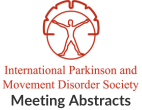Postoperative delirium after deep brain stimulation surgery for Parkinson’s disease
Objective: To investigate the potential predictive factors of postoperative delirium after deep brain stimulation surgery for Parkinson’s disease (PD). Background: Subthalamic nucleus deep brain stimulation…Prevalence of Parkinson’s disease and Drug-induced Parkinsonism from National Health Insurance Service Claims Data (NHISCD)
Objective: To evaluate the prevalence and characteristics of of drug induced parkinsonism Background: Drug induced parkinsonism (DIP) is a clinically important disease because it can…Fundamental limit of the alpha-synuclein immunohistochemistry using the endoscopic biopsy from the gastrointestinal tract as a biomarker for Parkinson disease: a case-control study
Objective: To investigate significance of the Lewy pathology in biopsy and surgical specimen in the gastrointestinal (GI) tract as an in-vivo biomarker for Parkinson disease (PD). Background: Alpha-synuclein…Beneficial and Protective Effects of Withania Someniferais On Mice Brain: A Therapeutic Potential Drug for Parkinson’s Disease
Objective: Objective of our study was evaluate effect of Withania Someniferais leaves on Parkinsons brain of mice Background: Parkinson’s disease (PD), an age-related disorder, is…Effects of different intensity exercises on motor function of PD rats as well as the regulation of DA
Objective: This paper research the intervention effect of the different intensity treadmill exercise on motor function of Parkinson 's diseases (PD) model rats,and explore the…Evaluating wearable sensors for objective measurement of motor features in Parkinson disease and Huntington disease – a pilot study
Objective: Evaluate the feasibility of wearable sensors in measuring motor features of individuals with PD, HD, prodromal HD, and controls in clinic and at home.…Determinant factors of treatment adherence in Parkinson’s disease
Objective: To determine factors predicting treatment adherence in patients with idiopathic Parkinson’s disease. Background: Parkinson’s disease is the second most common cause of neurodegenerative disease…Cognitive and demographic predictors of progression to MCI and dementia in Parkinson’s disease
Objective: To determine the association between demographic and cognitive features and subsequent progression of cognitive symptoms in Parkinson’s disease (PD). Background: Most patients diagnosed with…Rotenone induces astrocyte-mediated non-cell autonomous dopaminergic neurotoxicity
Objective: In this study, we examined involvement of astrocytes in rotenone-induced dopaminergic neurotoxicity using primary cultured cells. Background: Several studies reported that pesticide exposure, such…Intention Awareness in Parkinson’s Disease
Objective: To investigate the role of dopamine in intention awareness of voluntary actions in patients with Parkinson’s Disease (PD). Background: Underactivation of the SMA due…
- « Previous Page
- 1
- …
- 284
- 285
- 286
- 287
- 288
- …
- 405
- Next Page »
